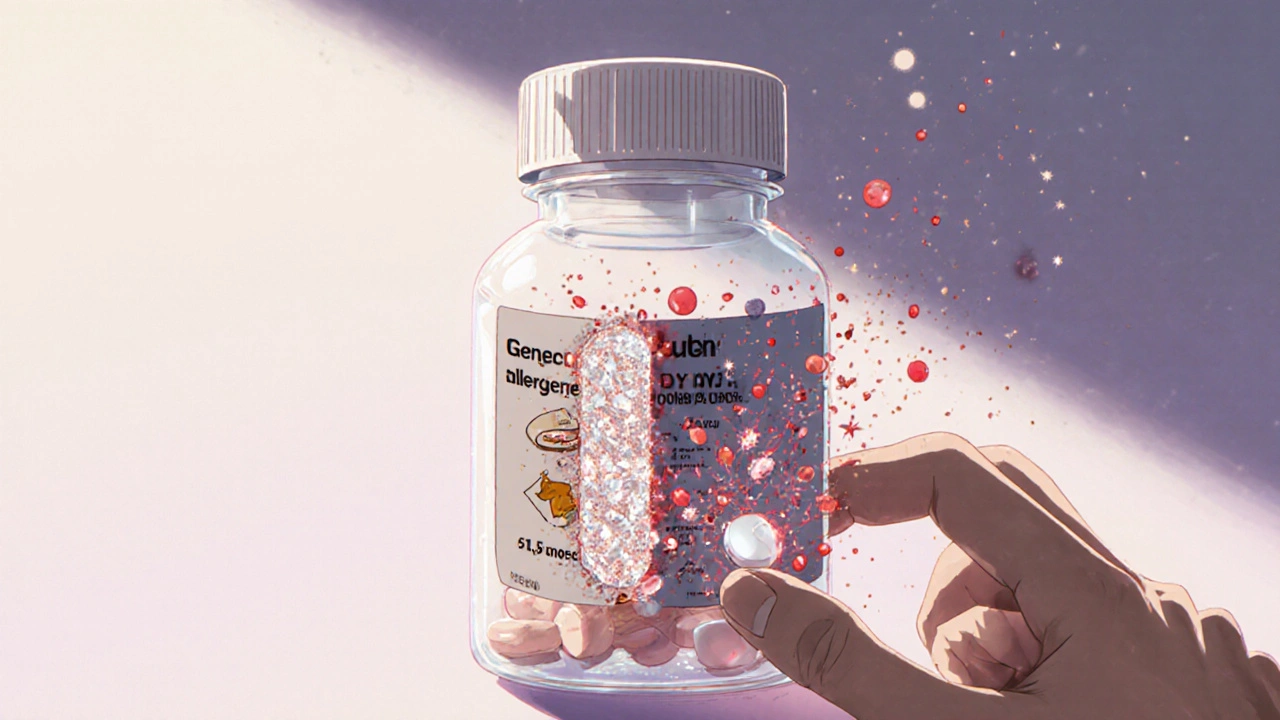Excipients: What They Are and Why They Matter in Your Medications
When you take a pill, you’re not just getting the active drug—you’re also swallowing excipients, non-active ingredients added to medicines to help with manufacturing, stability, and delivery. Also known as inactive ingredients, these are the fillers, binders, and coatings that make pills hold their shape, dissolve at the right time, and taste less awful. Without excipients, most medications would crumble, taste terrible, or not get absorbed properly. They’re the unsung heroes of your medicine cabinet.
But here’s the thing: excipients aren’t just harmless filler. Some people react to them—lactose, gluten, dyes, or preservatives like parabens—without even realizing it. If you’ve ever had stomach upset after taking a generic version of a drug you’ve used before, or noticed a rash after switching brands, it might not be the active ingredient. It could be the excipient. A study from the Journal of Allergy and Clinical Immunology found that over 15% of people with food sensitivities also react to excipients in pills, especially lactose and cornstarch. That’s why knowing what’s in your meds isn’t just for pharmacists—it’s for you.
Excipients play different roles depending on the drug. binders, like microcrystalline cellulose, hold the pill together. disintegrants, such as croscarmellose sodium, make the pill break apart in your stomach. lubricants, like magnesium stearate, keep the tablets from sticking to machinery during production. And then there are coatings—enteric coatings that delay release until the pill passes your stomach, or film coatings that mask bitterness. These aren’t random choices. They’re carefully selected based on the drug’s chemistry and how your body absorbs it.
Generic drugs have the same active ingredient as brand names, but often use different excipients. That’s why some people swear one version works better than another—even when the label says they’re identical. It’s not placebo. It’s formulation. If you’ve ever had trouble swallowing a pill, or felt bloated after taking a certain brand, the excipients might be the culprit. The good news? You can look them up. Most drug labels list inactive ingredients, and pharmacies can tell you what’s in each version.
And if you’re managing a chronic condition—like Crohn’s, celiac, or a severe allergy—you need to treat excipients like you treat the drug itself. Ask your pharmacist: "What’s in this pill besides the active ingredient?" They can help you find versions without lactose, gluten, or artificial colors. It’s not always easy, but it’s possible. Some manufacturers even make specialty formulations for sensitive patients.
Below, you’ll find real-world examples of how excipients affect medication use—from how they impact absorption in people with digestive issues, to why some pills cause reactions while others don’t. You’ll see how formulary rules in hospitals control which excipients are allowed, how generic switches can trigger side effects, and why some drugs are harder to find in certain forms. These aren’t just technical details. They’re the quiet reasons your treatment works—or doesn’t.

